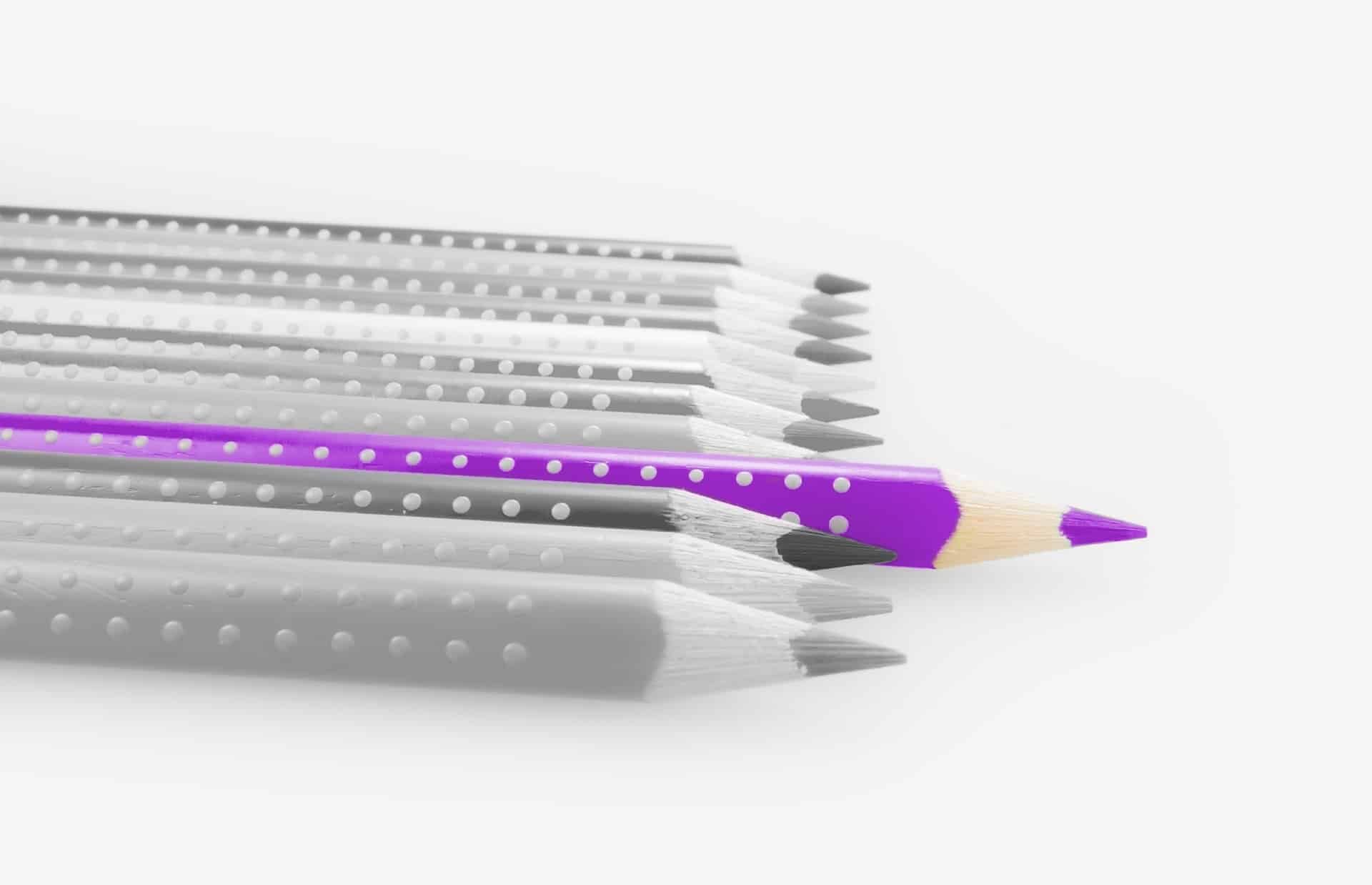This article explores characteristics of young gifted students in kindergarten and grade 1. According to the Texas State Plan for the Education of Gifted/Talented Students (State Plan; Texas Education Agency [TEA], 2019), all kindergarten students are “automatically considered for gifted/talented and other advanced level services” (Student Assessment: Accountability, 2.20, p. 5). Once all students have been screened for services, the State Plan adds that:
At the kindergarten level, as many criteria as possible, and at least three (3), are used to assess students who perform at or show the potential of accomplishment relative to age peers. (Student Assessment: Accountability, 2.21, p.5).
With consideration toward criteria established by the state, this article looks at behaviors associated with young gifted students. This exploration will continue in a second article with suggestions of instructional strategies to meet the requirements of the Texas Performance Standards Project (https://www.texaspsp.org).
Characteristics
Pre-Kindergarten
Parents/guardians facilitate identification of primary-age gifted learners when they relate early behaviors to school personnel. For example, parents may want to share with school personnel if as infants their children needed less sleep, became fussy if facing one direction too long, and/or appeared more alert than their peers (Bainbridge, 2020). Bainbridge continued with the following list of behaviors, noting that gifted young children may:
- frequently reach “milestones,” such as walking and first speech, earlier than average;
- speak late, but then speak in complete sentences;
- have a strong desire to explore, investigate, and master the environment;
- master toys and games early and then discard them;
- be very active (but activity with a purpose, not to be confused with Attention Deficit/Hyperactivity Disorder);
- be able to distinguish between reality and fantasy; and/or
- show an intense interest in numbers or letters (or start doing simple math or teach themselves to read by the time they are three).
Identifying these signs adds insight into primary-age students with potential, but Bainbridge (2020) cautioned that early reading or interest in math may be clues about giftedness, but that not all gifted children reach these skills early.
Use of this information in referring students is helpful as final determination for appropriate services is considered.
Kindergarten–Grade 1
TEA’s Equity in Gifted/Talented Education website (https://www.gtequity.org) offers look-fors in these categories: socially adaptive behaviors, creative thinking, detail orientation, abstract/global thinking, and skills of inquiry.
The following is a summary of the information found on the site (TEA, 2022):
- Under the heading of “Socially Adaptive Behaviors,” the authors reference how easily these early learners adapt to social situations and with peers. They often observe their surroundings to accomplish a personal goal for the situation. Uninhibited by social gatherings describes them best. Primary-grade gifted children are not afraid to tackle new ideas or tasks and approach them intellectually, without emotion.
- As creative thinkers they see any task in unconventional and unique ways. The words, “What if …” often precede any work on tasks. Although they may approach a task analytically, they may use metaphors and symbols to explain their ideas.
- Under “Detail Orientation,” the young gifted child offers precise explanations, has strong memory skills, and, in some cases, are advanced with their motor skills.
- As “Abstract/Global” thinkers, these children appear beyond their age peers in that they see the forest before the trees, meaning that they go beyond the facts to state basic concepts that summarize the details. Their skills of inquiry exhibit ability to learn more quickly and blossom with a challenge. They are task-committed when interested and with interests that seem beyond their age peers. The ability to learn quickly is noted in multilinguals in their rapid ability to learn English.
Not all primary-age students will display all these behaviors and abilities, but these characteristics provide teachers with tools for observing their students with a practiced eye. For example, teachers offer all students an opportunity to express their creative ability by asking them to reflect on a book read to them in this way: After reading a book with multiple characters, the teacher asks them to draw one of the characters in a different setting. Or, using two books, one a traditional fairy tale and one a fairy tale from another culture, the teacher asks students, “What if ___ (one main character from each) changed places?” Or, “Draw the characters in one story in the setting of the other story.” Upon completion of tasks, students explain their choices. Through explanations of their choices, words, and drawings, depth of thinking is observed and insight is added into their culture and their homes. Access “Varied Faces” from TEA’s Equity in Gifted/Talented Education website (www.gtequity.org) to understand the ideas and perspectives all gifted students bring with them. In addition, recognize the importance of bringing in and valuing the cultures of all the students in the room. For example, make sure the fairy tales and stories reflect the cultures of all the students in the room.
Apply the five areas offered through the equity website as students complete their work and ask questions. Note how quickly students learn and how they make connections that are unusual for their age. These observations and input facilitate identification of gifted kindergarten and first-grade students. Any student who shows the following from activities in which the entire classroom participates should be noted for referral:
- examples of academic work beyond their peers,
- examples that are more creative than their peers,
- examples that show curiosity about academic work beyond their grade level, and/or
- examples of students who ask unusual questions.
One resource, Dr. Bertie Kingore’s “Planned Experiences” in her Kingore Observation Inventory (2016), offers multiple activities to elicit responses showing how gifted primary-age students think. Kingore’s third edition also offers activities that relate to the culture and experiences of students from low-income backgrounds.
Using Content to Elicit Thinking
As stated in the Texas State Plan for the Education of the Gifted/Talented, “Districts meet the needs of gifted/talented students by modifying the depth, complexity, and pacing of the curriculum and instruction ordinarily provided by the school” (p. 9). In order to meet this goal, educators use the state’s Texas Essential Knowledge and Skills (TEKS) to adapt the learning needs of gifted students. Adaptations or modifications include critical and creative thinking as a part of depth and complexity.
For example, literature provides a chance to expand primary students’ thinking by probing beyond the story, its characters, or the setting. The following are suggestions for predicting, forced associations, and power writing.
Predicting
Purpose: To predict setting and characters.
After showing students a view the cover of a book, ask them to predict where the story will take place. Ask them to:
- Write or say as many words as they can that predict where this story will take place (the setting).
- Write or draw as many words or pictures as they can that predict what each character will do in the story.
Forced Association
Purpose: Critical and Creative Thinking
Students or teacher chooses any two words from the story above.
- Create a sentence from those two words and any other words needed.
- Add another sentence using the two words given and any other words needed.
- Add a third sentence to expand the ideas in the first two sentences.
- Add a conclusion sentence to complete the ideas expressed in the first three sentences.
Note: Students may draw what they are thinking and explain orally.
Power Writing
Purpose: Fluency and Flexibility
Tell students you will time them for 1 minute on each of the instructions, then say:
- Write/Draw as much as you can, as fast as you can, and as best as you can about ______ (a main character in the Predicting story).
- Write/Draw as much as you can, as fast as you can, and as best as you can about _______ (another character in the Predicting story).
- Write/Draw as much as you can, as fast as you can, and as best as you can about _____ (an action of one of the characters in the Predicting story).
If written responses, allow students five minutes to “clean up” their writing. Read aloud and discuss. Have students count their words after each timed writing. Students will notice that the number of words increases each time. Writing creates writing.
If drawing, allow them time to think through what they want to say. Make sure that they stick to their drawings.
All of these activities may be completed with concepts from science or social studies by using words from a science or social studies unit.
Using Depth and Complexity to Elicit Thinking
Texas Education Agency offers Kaplan’s tools to operationalize the terms depth and complexity. Definitions of depth and complexity are found in Toolkit I, Part iii of this site: http://jukebox.esc13.net/01_TeacherToolkit_2017/HTML_files/gt_research_skills.html#kaplan. Four ways to add depth and complexity are listed here with examples in the four core areas. In addition to the elements of depth and complexity, each activity is keyed to a broad-based theme or concept. By using a concept to guide thinking, students produce deeper and more complex responses. Teachers may want to introduce the questioning by saying, “We will be looking for ____ (patterns, systems, etc.)” before asking any questions.
These activities may be used with the whole class in order to facilitate referrals for gifted services or used after identification in a group of gifted learners.
The Big Idea
- ELA: The Tale of Rabbit and Coyote (the ELA examples are for this book, but any book selected by the teacher or students may be used)
- What is the main idea in ________? What general statement applies to ____? What generalization (main idea) can be made?
- Patterns: What words are repeated?
- Change: In what ways did the rabbit make changes to enticing the coyote?
- Relationships: Was the relationship between the coyote and the rabbit natural, forced, or chosen? Explain.
- Math
- Systems/Rules: Describe the rules for multiplication.
- Influences: If a number changes from positive or negative, what influence will it have over the sum?
- Patterns: What patterns repeat in multiplication? How are they alike and different for division?
- Social Studies
- Culture: Describe the similarities and differences of your town to a town close to you. Or, describe the differences between your class and another kindergarten/first-grade class at your school.
- Relationships: How do the relationships among students change when a new student enrolls in your class?
Details
- What are the features, attributes, factors, or characteristics?
- ELA: What is the difference between a tale and a story?
- Math: What are the factors in solving a math problem?
- Social Studies: What are makes a good citizen?
- Science: What are the characteristics of an animal cell?
Different Points of View (Multiple Perspectives)
- What are the opposing viewpoints? How do different people and characters see this event or situation?
- ELA: Rewrite The Tale of Rabbit and Coyote from the Coyote’s point of view.
- Math: How many ways can you check a division problem? Show your work.
- Social Studies: Relate the point of view of the people in your class with that of a third grader in your school.
- Science: Create a play in which an animal habitat is alike and different from a plant habitat.
Change Over Time
- What can be learned by looking at past, present, and future? What change is noted?
- ELA: How did Rabbit’s experiences in the past influence his experience in the present with Coyote?
- Math: How have counting devices changed since the abacus?
- Social Studies: Examine the past and present of school buildings. Predict what schools will be like in 2100.
- Science: How have ways of looking inside the body changed since your grandparent’s time?
Using Activities for the Identification Profile
Kindergarten
Assessment for identification at kindergarten is defined in the State Plan (TEA, 2019) as follows:
2.20 All kindergarten students are automatically considered for gifted/talented and other advanced level services.
2.21 At the kindergarten level, as many criteria as possible, and at least three (3), are used to assess students who perform at or show the potential of accomplishment relative to age peers. (State Plan, Student Assessment: Accountability, p. 5)
Suggestions and activities from this article may be used to meet the requirements in 2.20 and 2.21. As noted, they are provided to all kindergarten students for the referral process and may then be included as a part of the assessment for services. Evaluation of the activities may be placed on the student’s Identification Profile as one of the three assessments.
First Grade
All students not yet identified for services follow these criteria for identification (TEA, 2019):
2.16 Students in grades K–12 shall be assessed and, if identified, provided gifted/talented services (TEC §29.122 and 19 TAC §89.1(3)).
2.17 Data collected from multiple sources for each area of giftedness served by the district are included in the assessment process for gifted/talented services (19 TAC §89.1(2)). The assessment process allows for student exceptionalities to the extent possible.
2.18 Based on a review of information gathered during the assessment process, students whose data reflect that gifted/talented services will be the most effective way to meet their identified educational needs are recommended by the selection committee for gifted/talented services. (State Plan, Student Assessment: Accountability, p. 5)
Just as stated in the kindergarten level use of the activities for identification, the activities may be included on the Profile or added as additional information for the identification committee.
Young gifted children are just that: children. Yet, their giftedness creates differences in the way they relate to learning and to their age peers. Recognition of their intellectual abilities and/or social strengths facilitates understanding of their academic and emotional needs in the primary grades.
References
Bainbridge, C. (2020, September 17). Characteristics of young gifted children. Very Well Family. https://www.verywellfamily.com/characteristics-of-young-gifted-children-1449374
Kingore, B. (2016). The Kingore observation inventory: Equitable practices to recognize and differentiate for high ability (3rd ed.). P. A. Publishing.
Texas Education Agency. (2019). Texas state plan for the education of gifted/talented students. https://tea.texas.gov/Academics/Special_Student_Populations/Gifted_and_Talented_Education/Gifted_Talented_Education
Texas Education Agency. (2022). Primary students’ behaviors worthy of additional consideration. Equity in Gifted/Talented Education. https://www.gtequity.org/primary-students-behaviors-worthy-additional-consideration
Texas Education Agency. (2019). Gifted/Talented teacher toolkit I, iii.
http://jukebox.esc13.net/01_TeacherToolkit_2017/HTML_files/gt_research_skills.html#kaplan
Learn about Cecelia:
Cecelia Boswell, Ed.D. taught migrant and gifted students, served as the Advanced Academics consultant for ESC-14, and the executive Director of Advanced Academics for Waco ISD. She is a consultant in district evaluation of gifted services and professional learning in gifted education and leadership nationally and throughout Texas. Dr. Boswell served on the TAGT Board of Directors, as TAGT President, and as President of the CEC-TAG. She has co-authored six books, including a chapter in an upcoming book by Susan Johnsen and Joyce VanTassel-Baska.






